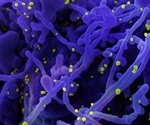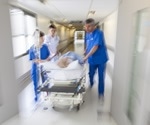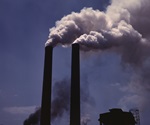
Factors that determine COVID-19 mortality
A potentially important new study by MIT researchers and published on the preprint server medRxiv* in June 2020 shows that COVID-19 death rates in U.S. states correlate with several factors like commuting to work, temperatures, and geographical location, but not with ICU beds, obesity or poverty. This work, if validated, could help identify the actual contributing factors that shape mortality rates across the USA.
Effect of human genes on severity and infectivity of SARS-CoV-2
Now, a new paper published on the preprint server medRxiv* reports the results of an analysis of the association between the genetic variants in the patients and the clinical progression of the disease. The study included 332 patients hospitalized with COVID-19 in a single-center, with widely varying laboratory and clinical features. There were 25, 12, and 17 patients with asymptomatic, mild, and critical disease.
An entire trimeric S-protein of SARS-CoV-2 is necessary for protective immune response
Researchers from Seattle Children's Research Institute and the University of Washington described a high-throughput and rapid technique to quantify circulating levels of functional antibodies against severe acute respiratory syndrome coronavirus 2 (SARS-CoV-2), suggesting that the entire viral spike protein should be used to characterize the immune response. Their paper is currently available on the medRxiv* preprint server.
Early respiratory distress syndrome caused by SARS-CoV-2 in a newborn
A recent case report from the researchers at the University of São Paulo, published in the journal CLINICS, shows how newborns can also be infected with severe acute respiratory syndrome coronavirus 2 (SARS-CoV-2) and develop serious symptoms, even though the most likely route of infection in such cases is still not completely clear.
Early neutralizing response to SARS-CoV-2 dominated by IgA antibodies
Researchers from France and the U.S. demonstrated how severe acute respiratory syndrome coronavirus 2 (SARS-CoV-2) infection could induce an early and vigorous virus-specific IgA response that paves the way for the production of SARS-CoV-2 IgG antibodies, with even better neutralizing properties. Their paper is currently available on the medRxiv preprint server.
Cannabis plant may harbor SARS-CoV-2 for at least a week
Researchers at the Medicinal Genomics Corporation have warned that cannabis flowers exposed to severe acute respiratory syndrome coronavirus 2 (SARS-CoV-2) may harbor the virus for at least seven days.
NIAID and Moderna scientists describe SARS-CoV-2 vaccine development
Researchers at the National Institute of Allergy and Infectious Diseases and Moderna Inc., have described the potent neutralizing effects of a candidate vaccine for severe acute respiratory syndrome coronavirus 2 (SARS-CoV-2) that is currently being tested in a phase II trial.
New test can detect the RNA of SARS-CoV-2 in patient samples in 30 minutes
A new diagnostic test can detect the RNA of SARS-CoV-2, the virus that causes COVID-19, in urine, blood, saliva or mouth swab samples in just 30 to 45 minutes, according to a new study published June 12, 2020 in the open-access journal PLOS ONE by Laura Lamb of the Beaumont Health System, Michigan, USA, and colleagues.
Study reveals protein responsible for vulnerability in cancer cells
A new University of California, Irvine-led study reveals a protein responsible for genetic changes resulting in a variety of cancers, may also be the key to more effective, targeted cancer therapy.
Using a face mask reduces the spread of COVID-19 infections
A study by a team of researchers led by a Texas A&M University professor has found that not wearing a face mask dramatically increases a person's chances of being infected by the COVID-19 virus.
New AI algorithm could help people with type 1 diabetes better manage their glucose levels
Researchers and physicians at Oregon Health & Science University, using artificial intelligence and automated monitoring, have designed a method to help people with type 1 diabetes better manage their glucose levels.
RCSI scientists develop new biomaterial with potential to accelerate bone regeneration
Scientists at RCSI University of Medicine and Health Sciences have developed a new biomaterial that has the potential to accelerate bone regeneration by promoting an immune response that encourages repair and lowers the risk of inflammation.
Hydroxychloroquine shows no antiviral effect on SARS-Cov-2 in non-human primate models
A study on the effects of hydroxychloroquinei n macaques infected with the SARS-CoV-2 virus, , used alone or in combination with azithromycin, have been pre-published on Research Square, after their submission to Nature.
JRC creates a database of COVID-19 diagnostic devices and test methods
As part of EU efforts to provide guidance on the use of coronavirus tests, the JRC has created a database of COVID-19 in vitro diagnostic devices and test methods that gathers information on available tests in one place.
Study shows how combining two drugs may be an effective treatment for HLH
Scientists at St. Jude Children's Research Hospital, UCSF Benioff Children's Hospitals and Baylor College of Medicine are investigating how to best treat hemophagocytic lymphohistiocytosis (HLH), a rare immune disorder.
Damon Runyon Cancer Research Foundation awards $3.2 million to early-career physician-scientists
The Damon Runyon Cancer Research Foundation has named four new Damon Runyon Clinical Investigators.
Burt's Bees presents new research supporting the power of natural skin care at AAD VMX 2020
Burt's Bees, a leader in science-backed natural skin care, today announced new research supporting the proven power of nature-based solutions that deliver the tolerability and efficacy that are critical for dermatologists and their patients.
China's COVID-19 interventions caused abrupt decline in tropospheric nitrogen dioxide
Pandemics and the Environment: China's COVID-19 Interventions Reduced Nitrogen Dioxide Levels A new Special Collection of Science Advances papers will delve into how pandemics such as COVID-19 affect - and are affected by - global environmental conditions, underscoring the interconnectedness of global processes.
Inhibitory interneurons cause excitation in the developing brain
Brain function depends on inhibitory cells that balance or 'brake' excitation. These neurons allow the brain to process information and also prevent runaway seizures.
Asymptomatic infections may account for up to 45% of all COVID-19 cases
An extraordinary percentage of people infected by the virus behind the ongoing deadly COVID-19 pandemic never show symptoms of the disease, according to the results of a Scripps Research analysis of public datasets on asymptomatic infections.

_c4032ceb6a724ffa869085821ca110ee-150x125.jpg)




_e81283f385bb479ab7a91b4cd7f3f054-150x125.jpg)


































.png)










No hay comentarios:
Publicar un comentario